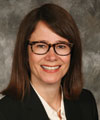April 2017 • Volume 105 • Number 4 • Page 52
Thank you for viewing this Illinois Bar Journal article. Please join the ISBA to access all of our IBJ articles and archives.
Loss Prevention
Not Just the Same Old Grind

Think you know the practice areas and lawyer miscues that cause most malpractice claims? A recent study lets you test your assumptions.
I have measured out my life in coffee spoons
- T.S. Eliot, "The Love Song
of J. Alfred Prufrock"
Contradictions do not exist. Whenever you think you are facing a contradiction, check your premises. You will find that one of them is wrong.
- Ayn Rand, Atlas Shrugged
At our house, I get up first and it's my job to make the coffee. My pre-coffee cognitive abilities are sketchy at best, so I have a routine:
1. Add water to reservoir in coffeemaker.
2. Stuff paper filter into plastic brew cone.
3. Grind beans.
4. Measure ground beans into coffee filter.
5. Experience low-level irritation because the paper filter does not fit properly into the brew cone. The filters come folded flat and look like little brown trapezoids with a crimped bottom and one crimped edge. When they are opened and placed into the cone, they protrude over the top of the cone and have to be smashed firmly against the sides, lest the filter snap shut as I'm trying to fill it with ground coffee. (This is never a good moment, and it's just as well that I'm usually alone in the kitchen when it happens.)
6. Put brew cone over pot and press "on" switch.
Now, after 30-odd years of hidebound practice, a marvelous new discovery has enabled me to delete Step 5 from my Caffeine Launch Sequence. This January, as I stumbled around the kitchen waiting for the life-giving brew to emerge from the cone, I gazed idly at the coffee filter box and noted the following directions:
- Fold at filter crimp for proper placement
- Place filter into coffee maker
- Add coffee
"Fold at filter crimp for proper placement." The solution was right under my nose all along. Folding the coffee filter along its crimped edges makes it fit perfectly into the cone and stay open as it is being filled. My morning routine is now suffused with a feeling of rightness, of things that are designed to work properly and actually do, a minor miracle in this weary world - or at least, in my weary eyes as I brew the quotidian beverage in the pre-dawn gloom.
It turns out that I am not the first to marvel at this discovery. In February 2016, Rebecca Shapiro, a senior editor at Huffington Post based in Hong Kong, proclaimed the good news in an article entitled, "There's a Reason Your Coffee Filter Never Fits Quite Right," with helpful photographs of the problem and the origami that is its solution, exhorting readers to "Prepare for the most satisfying moment of your life."1 The article reaped 400[!] reader comments, mostly falling into one of three categories: (1) gratitude for this elegant solution to a vexing problem, (2) impassioned recommendations of alternative coffee-making equipment (e.g., French press, wire mesh filter basket, K-Cups), and (3) fear for the future of this country if people can't even read the directions on a box of coffee filters.2
If the Coffee Filter Epiphany teaches us anything, it is that even when we think we know stuff, it makes sense to validate our assumptions once in a while. This is true for coffee filters, and it's certainly true for more complex stuff - like lawyers' malpractice claims.
Once every four years, the ABA Standing Committee on Lawyers' Professional Liability publishes a "Profile of Legal Malpractice Claims" that can help us validate what we think we know about the causes of malpractice claims against lawyers. The latest edition of this study was published in September 2016 and analyzes a total of 44,185 claims reported to various lawyers' professional liability insurance companies over a three year period from 2012 through 2015. The study's compilers are careful to point out its limitations, including the fact that it only captures claims from the insurers who chose to participate in the study, and thus lacks data about uninsured claims or claims reported to carriers who choose not to participate.
Even with its limitations, the 2016 study offers us a chance to test some of our assumptions about legal malpractice claims, and see if they have roots in reality. Let's look at some of the more intriguing findings.
Substantive errors account for a majority of all claims
Don't let me be the last to know.
- Del Amitri, "Always the Last to Know"
If you think that most malpractice claims come from administrative errors like the failure to file documents, think again.
Year after year, the studies have found that substantive errors are the largest category of errors alleged in legal malpractice claims. In the 2016 study, for the first time since the 1999 study, substantive errors account for more than half of alleged errors. And the single most common error is a substantive error, namely "Failure to Know/Properly Apply the Law,"3 which accounts for 15.38 percent of claims in the 2016 study. This validates the risk management maxim that dabbling in unfamiliar areas of practice is risky business, and underscores the importance of concentrating your practice on a few areas of law so that you can stay competent and capable in those areas.
It turns out, by the way, that administrative errors have dropped off significantly, from 30.13 percent of claims in the 2011 study to 23.15 percent in the 2016 study. The study's authors suggest that "[b]etter computer calendaring systems, e-filing, electronic record keeping, and multiple modes of communication with clients appear to have assisted attorneys in managing their law practice." 2016 Study at 27. And, indeed, the 2016 study shows decreases in procrastination in performance/followup (from 7.05 percent in 2011 to 2.71 percent in 2015), lost file, document evidence (from 2.34 percent in 2011 to 1.20 percent in 2015), and failure to react to calendar (from 2.34 percent in 2011 to 1.20 percent in 2015). 2016 Study at 18.
If technology is helping lawyers avoid administrative errors, that is great news. But it can have its drawbacks, too - I have to wonder if the increase in "Failure to Calendar Properly" (from 4.34 percent in 2011 to 6.51 percent in 2015) is due, at least in part, to electronic calendars that make it ridiculously easy to miscalendar dates.
Some practice areas generate lots of claims, but there's no "safe" area
Nowhere to run to, baby,
nowhere to hide
Got nowhere to run to, baby,
nowhere to hide.
- Martha and the Vandellas,
"Nowhere to Run"4
The 2016 study shows that the "usual suspects" - plaintiffs' personal injury, real estate, and family law - are leading the pack when it comes to number of malpractice claims. But we shouldn't jump to the conclusion that these practice areas are disproportionately risky. As the study's authors are careful to point out, the study doesn't include information about how much time lawyers spend in any particular area of law. So it could be that there are lots of claims in these practice areas simply because lawyers are doing a lot of work in those areas.
The 2016 study does, however, provide some interesting insights about the impact of economic and social forces on the relative number of claims in different practice areas. For example, plaintiffs' personal injury practice has generated the greatest number of claims in every survey back to its beginning in 1985 - except last time around, in 2011, when real estate took the top spot with 20.33 percent of claims compared to 15.59 percent for plaintiffs' personal injury.
The 2016 study suggests that "[g]iven the events causing the 2008 global financial crisis, it was not surprising to see a spike in Real Estate claims in the 2011 Study." 2016 Study at 26. In the 2016 study, real estate has fallen back to second place with 14.89 percent of claims, and plaintiffs' personal injury again tops the chart at 18.24 percent.
The 2016 study also notes a continued upward trend in the family law claims category, which has occupied third place since the 2007 study. Insurers participating in the study attributed this to a "'perfect storm' of conditions: an increase in the number of divorces, the decline of family assets post-2008, and the general dissatisfaction of people involved in a divorce." 2016 Study at 27. Another anecdotal observation made by study participants is that lawyers in this area "frequently fail to memorialize advice given to their clients or fail to adequately memorialize the parties' agreements." Id.
While these three practice areas are topping the chart today, it seems likely that social and economic forces could end up propelling other areas of practice to the top of the list the next time around. And whether your personal area of practice is at the top of the list or the bottom,5 remember that no area of practice is immune from claims.
Managing the risks of law practice is a task considerably more complicated - and important - than properly folding a coffee filter. Make sure your firm is "following the directions" when it comes to practice management procedures that will help your firm avoid malpractice claims.

Karen Erger is vice president and director of practice risk management at Lockton Companies.
KErger@lockton.com
- Rebecca Shapiro, There's a Reason Your Coffee Filter Never Fits Quite Right, HuffingtonPost.com (Feb. 26, 2016), http://www.huffingtonpost.com/entry/coffee-filter-doesnt-fit-right-coffee-maker_us_56d09785e4b0871f60eb402d.
- Readers of this column need not (but of course are free to) write letters to the IBJ editor to express sentiments of types #2 and #3. Recommendations of new coffee gear will fall upon deaf ears, as I'm trying desperately to kick the habit of buying every fancy-pants kitchen gadget recommended by friends and by Cook's Illustrated. No need to chide me for 30-plus years of ignorance of the coffee filter instructions; I feel completely silly about it and also a bit guilty since I'm always hounding my husband Tom to read the directions before he uses stuff. If he's reading this, I'd just like to point out that it's way easier to hurt yourself misusing a new chain saw than by improperly deploying a paper coffee filter.
- The study defines "Failure to Know/Properly Apply the Law" to mean circumstances "where the attorney was unaware of the legal principles involved, or where the attorney did the research but failed to ascertain the appropriate principles," and also "where the lawyer fails to see the legal implications of the known facts," as where the lawyer knows that a testator has children who are not to receive anything under the will, but "fails to recognize the requirement that the children be mentioned in the will." 2016 Study at 31.
- Written and produced, of course, by Holland-Dozier-Holland, this tune hit #8 on the Billboard Pop Singles chart, and was ranked #367 on Rolling Stone's "500 Greatest Songs of All Time" (2010 edition).
- In the 2016 study, antitrust and admiralty were the practice areas with the fewest claims, at .04 percent and .05 percent respectively.

